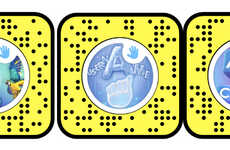
'SignAll' is Working to Create Real-Time Translation Possible
Joey Haar — February 16, 2018 — Social Good
References: signall.us & techcrunch
In recent years, tech companies have made massive strides in bringing real-time language-recognition software to smart devices around the world, but SignAll is a startup that's trying to do the same for a language that has been mostly ignored. The Hungarian company is working to bring real-time translation of America Sign Language (or ASL) to the technology world.
ASL poses unique challenges for language translation. As opposed to oral languages, it consists entirely of visual cues, and it has no written counterpart whatsoever. This means that microphones need to be replaced with cameras that can identify both manual components (i.e hand movements) and the more subtle facial expressions that help to communicate grammatical meaning.
SignAll uses a combination of computer vision and natural language processing to translate ASL into English in real-time, thus easing barriers that many deaf people face in society at large.
Image Credit: SignAll
ASL poses unique challenges for language translation. As opposed to oral languages, it consists entirely of visual cues, and it has no written counterpart whatsoever. This means that microphones need to be replaced with cameras that can identify both manual components (i.e hand movements) and the more subtle facial expressions that help to communicate grammatical meaning.
SignAll uses a combination of computer vision and natural language processing to translate ASL into English in real-time, thus easing barriers that many deaf people face in society at large.
Image Credit: SignAll
Trend Themes
1. Real-time Language Recognition - Disruptive innovation opportunity: Develop real-time translation software for languages that have been mostly ignored.
2. Visual Cue Translation - Disruptive innovation opportunity: Utilize computer vision to create translation platforms for languages consisting entirely of visual cues.
3. Facial Expression Recognition - Disruptive innovation opportunity: Combine natural language processing with facial expression recognition to enhance language translation for non-verbal languages.
Industry Implications
1. Translation Services - Disruptive innovation opportunity: Incorporate real-time language recognition technology into translation service platforms.
2. Technology Hardware - Disruptive innovation opportunity: Develop advanced cameras and visual sensors capable of identifying manual components and subtle facial expressions for language translation.
3. Assistive Technology - Disruptive innovation opportunity: Create assistive technology that supports communication for deaf individuals by translating sign language in real-time.
4.1
Score
Popularity
Activity
Freshness























